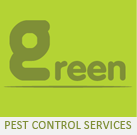Pests, those unwanted and intrusive creatures, have been a constant struggle for homeowners throughout history. Whether it’s ants invading your kitchen, spiders spinning their webs in corners, or rodents scurrying in the walls, dealing with pests can be both frustrating and worrisome. Fortunately, with the advancements in pest control methods, maintaining a pest-free home is achievable. In this comprehensive guide, we’ll explore various strategies and tips to help you effectively control pests and create a comfortable living environment.
1. Understanding Common Household Pests
Before diving into pest control strategies, it’s crucial to understand the common types of pests that can infest your home. Some of the most common household pests include:
- Ants: These tiny creatures are often attracted to food and water sources in your kitchen.
- Cockroaches: Resilient and hard to eliminate, cockroaches can carry diseases and trigger allergies.
- Rodents (Mice and Rats): These pests can cause structural damage and transmit diseases.
- Spiders: While most spiders are harmless, some can be poisonous and require attention.
- Bed Bugs: These nocturnal insects feed on blood and can cause itchy, red welts.
- Termites: Known as “silent destroyers,” termites can cause extensive damage to wooden structures.
Title: The Ultimate Guide to Effective Pest Control: Keeping Your Home Pest-Free
Introduction
Pests, those unwanted and intrusive creatures, have been a constant struggle for homeowners throughout history. Whether it’s ants invading your kitchen, spiders spinning their webs in corners, or rodents scurrying in the walls, dealing with pests can be both frustrating and worrisome. Fortunately, with the advancements in pest control methods, maintaining a pest-free home is achievable. In this comprehensive guide, we’ll explore various strategies and tips to help you effectively control pests and create a comfortable living environment.
1. Understanding Common Household Pests
Before diving into pest control strategies, it’s crucial to understand the common types of pests that can infest your home. Some of the most common household pests include:
- Ants: These tiny creatures are often attracted to food and water sources in your kitchen.
- Cockroaches: Resilient and hard to eliminate, cockroaches can carry diseases and trigger allergies.
- Rodents (Mice and Rats): These pests can cause structural damage and transmit diseases.
- Spiders: While most spiders are harmless, some can be poisonous and require attention.
- Bed Bugs: These nocturnal insects feed on blood and can cause itchy, red welts.
- Termites: Known as “silent destroyers,” termites can cause extensive damage to wooden structures.
2. Prevention: The First Line of Defense
The best approach to pest control is prevention. By making your home less attractive to pests, you can significantly reduce the likelihood of infestations. Here are some preventive measures to consider:
- Keep a Clean Environment: Regularly clean your home, especially kitchen areas, to eliminate crumbs and spills that attract pests.
- Seal Entry Points: Seal cracks, gaps, and openings in doors, windows, and walls to prevent pests from entering.
- Proper Food Storage: Store food in airtight containers to deny pests easy access to their favorite snacks.
- Maintain Yard: Trim vegetation and bushes around your home to minimize hiding spots for pests.
- Address Moisture Issues: Fix leaks and keep areas dry to deter pests that are attracted to damp environments.
3. Non-Chemical Approaches
If pests have already infiltrated your home, there are several non-chemical approaches you can take to control them:
- Traps: Use traps for rodents and insects to capture them without using chemicals.
- Natural Predators: Introduce natural predators like spiders or birds to keep pest populations in check.
- Physical Barriers: Install screens on windows and doors to prevent insects from entering your home.
4. Chemical Solutions
When preventive measures and non-chemical approaches are insufficient, it might be necessary to turn to chemical solutions. Always exercise caution when using chemicals, and follow instructions carefully. Some options include:
- Insecticides: Targeted insecticides can effectively eliminate pests. Choose environmentally friendly options when available.
- Rodenticides: For severe rodent infestations, rodenticides can be used. Ensure they are placed safely away from pets and children.
- Fumigation: In extreme cases, professional fumigation might be necessary to eliminate pests from your entire property.
5. Professional Pest Control
If your pest problem is persistent or extensive, it’s advisable to consult with a professional pest control service. These experts have the knowledge, tools, and experience to assess your situation and develop a customized solution. They can also provide ongoing maintenance to ensure pests don’t return.
Conclusion
Maintaining a pest-free home requires a combination of proactive prevention, non-chemical approaches, and, when necessary, well-considered chemical solutions. By understanding the behaviors of common pests and implementing these strategies, you can create a comfortable and healthy living environment for you and your family. Remember, pest control is an ongoing process, and regular vigilance is key to ensuring your home remains free from unwanted intruders.
